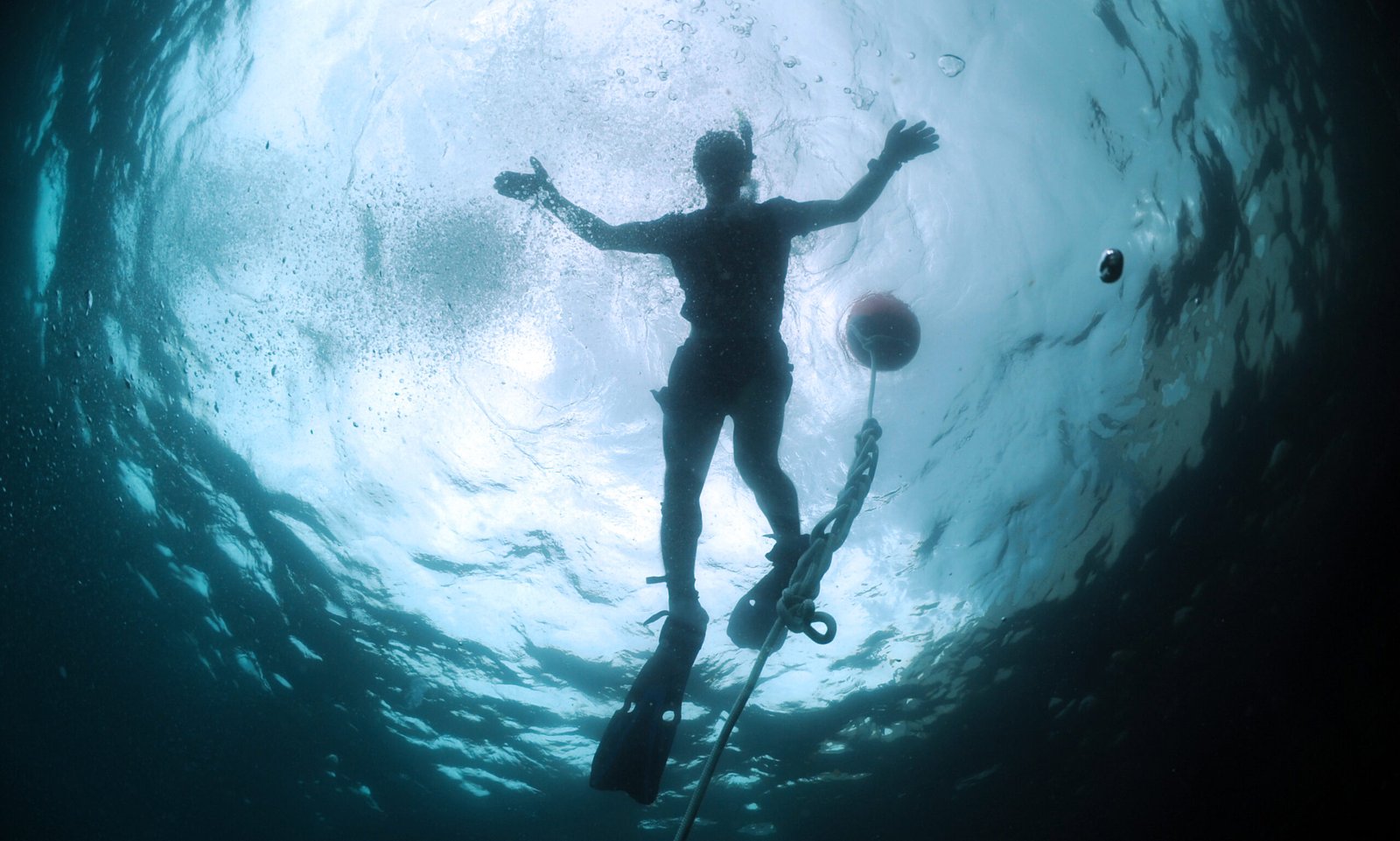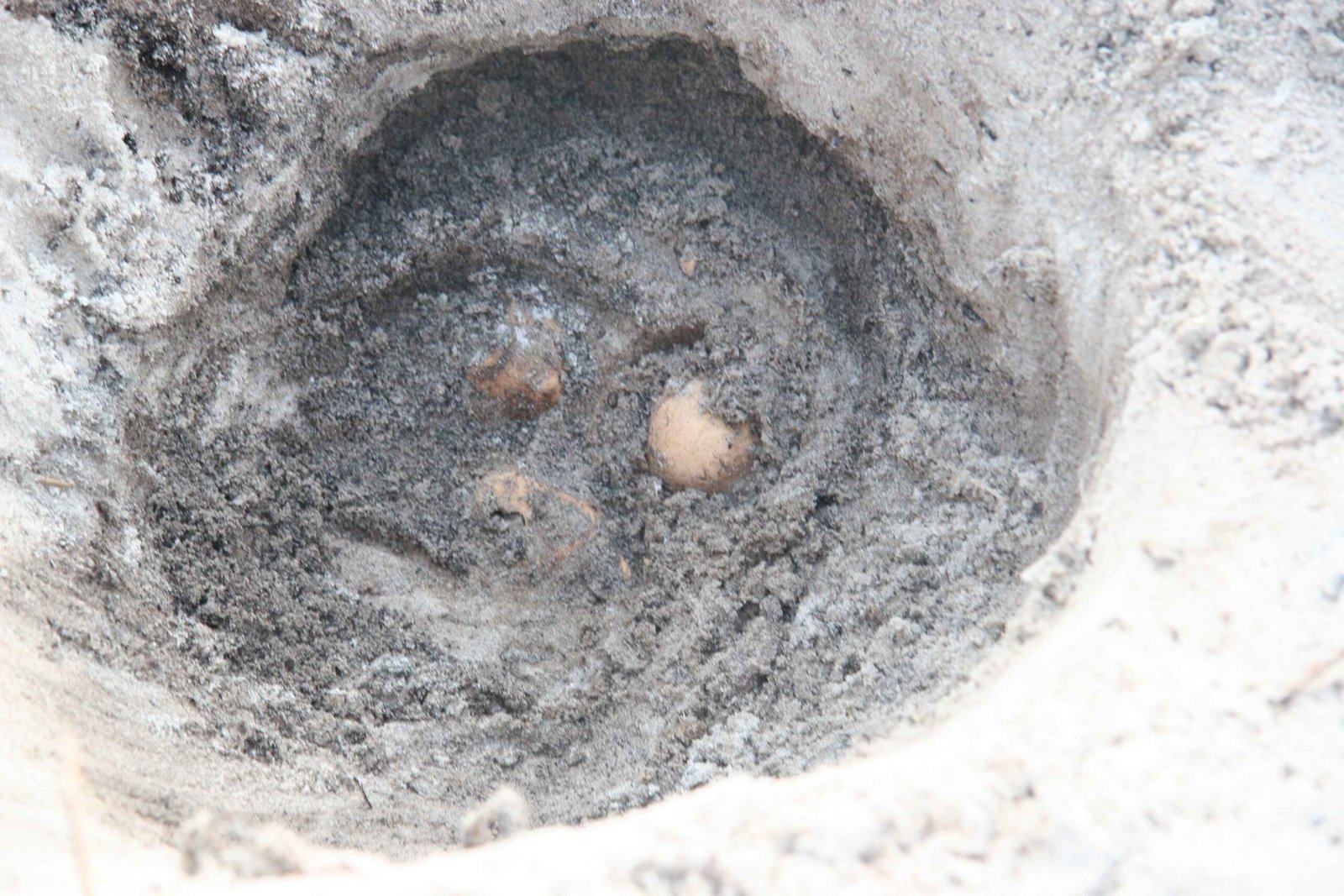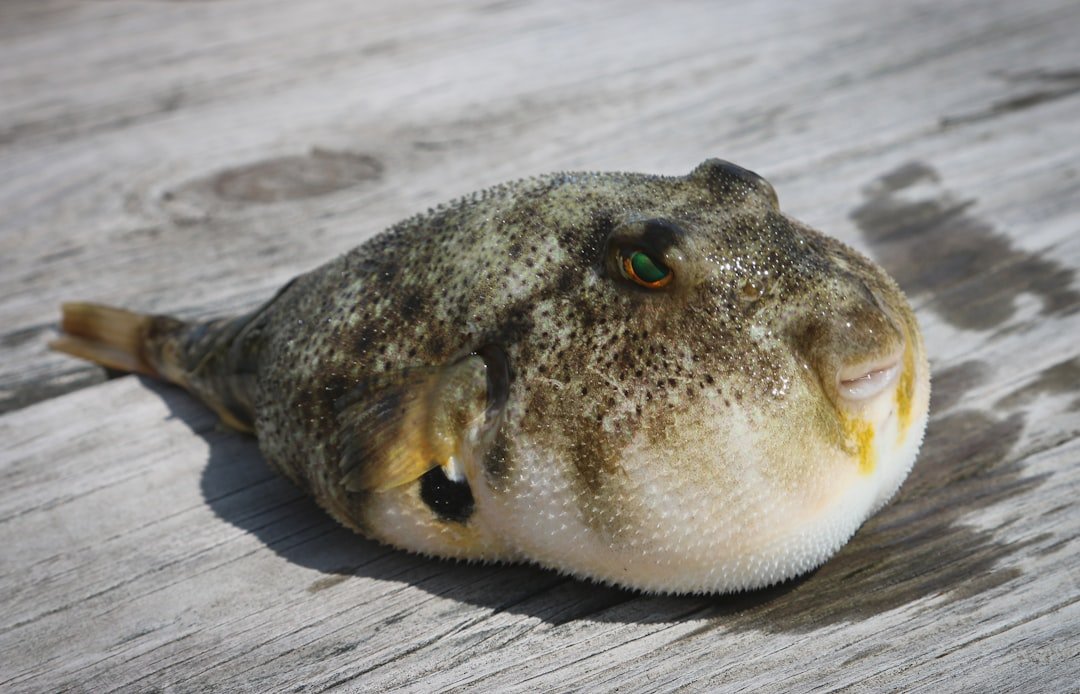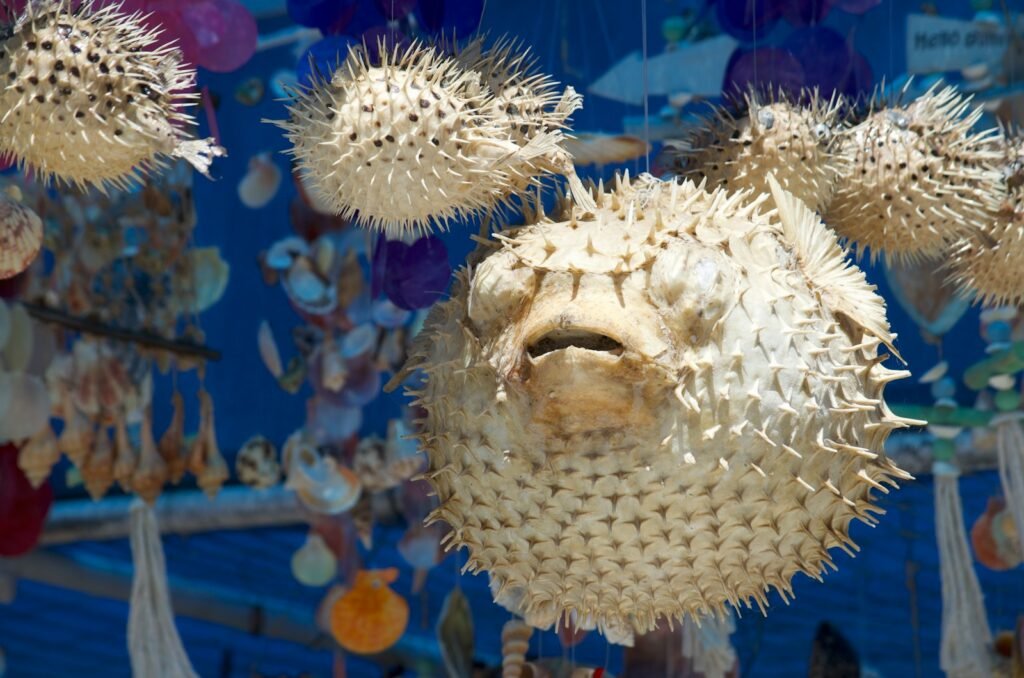On a quiet stretch of seafloor off southern Japan, a small pufferfish spends days carving a perfect circle into the sand – ridges, valleys, and a tidy nursery in the middle. Divers once called them ocean crop circles, beautiful and baffling, until cameras caught the artist in the act. The discovery didn’t just solve a mystery; it revealed a masterclass in animal architecture, where beauty is more than decoration. These circles are built for love, but also for physics, guiding currents and cradling life in a place where one stray surge can wipe a nest clean. The closer scientists look, the more this fish’s sandcastle turns into a blueprint for how nature engineers solutions in hard places.
The Hidden Clues

What first grabs you is the symmetry: a ring roughly about two meters across, with crisp spokes radiating from a calm, central basin. The maker is a male white-spotted pufferfish, a palm-sized engineer that shimmies, scoops, and smooths sand with patient precision. Early stages look messy – just dimples and scuffs – before the circle sharpens into geometry you might expect from a compass, not a fish. That transformation takes several days of nonstop work, and the final flourish is a rim decorated with small shell and coral fragments. It’s part sculpture, part signal, and part shelter, all stitched together by instinct and current.
Those decorations aren’t random; they reflect and refract water, while the shape itself subtly tunes flow. By adjusting the height of ridges and depth of grooves, the pufferfish creates a micro-landscape that does two jobs at once – catching a mate’s eye and taming the sea’s mood swings. In other words, it’s courtship with a hardhat on.
Courtship Geometry Underwater

Animal courtship can be loud or colorful, but here it’s architectural. The male’s circle advertises fitness the way a cathedral might speak to a city’s ambition: precision equals prowess. Females inspect multiple nests and, when satisfied, spawn in the tranquil center, where the finest sand has been gathered. Afterward, the male stays, a lone steward, fanning and guarding the eggs until they hatch. Beauty starts the conversation; parental care finishes it.
I remember watching the first time-lapse of a nest coming together and feeling a mix of awe and disbelief – like seeing a snowflake grow in real time. The longer I stared, the more it looked like handwriting, each stroke practiced and purposeful. The fish never measures, never redraws, yet lands on a pattern that works, again and again.
From Ancient Tools to Modern Science

Solving the circle mystery took old-school diving and new digital tricks. Divers mapped nests over successive days, while fluid-dynamics experiments used scaled models to test how water moves through the valleys and toward the center. More recently, structure-from-motion photogrammetry turned entire nests into precise three-dimensional datasets, letting researchers simulate current from any direction. Those models consistently showed that the upstream side funnels fine sediment inward, like a gentle conveyor belt powered by the sea itself. The nest isn’t just pretty – it’s an instrument tuned to the local flow.
The takeaway is quietly radical: complex design can emerge from a handful of simple rules repeated with patience. Simulations based on observed “ditch-digging” behaviors reproduced the circle’s geometry, suggesting the fish follows reliable heuristics rather than a step-by-step blueprint. It’s elegant, accessible engineering, and it works under pressure.
How a Two-Meter Circle Starts

At first, there is no circle – just dozens of irregular depressions pressed into the sand by the male’s body and fins. Over the next few days, those dimples align into a primitive wheel: valleys stretch outward and a central depression emerges. Midway through construction, the ridges rise and the contrast between peaks and troughs sharpens, amplifying texture that the water can grab. By roughly day seven to nine, the nest is complete, ringed with carefully placed shells and coral bits and a central carpet of the finest grains. It’s choreography with a deadline, synchronized to the female’s brief window of readiness.
What looks ornamental is functional timing: the decorations often appear just before spawning, and then the architect shifts to custodian. Any storm or stray fin can scuff the ridges, so males patch and re-sculpt as needed, keeping the physics working when it matters most.
Hydrodynamics: Form Meets Function

Why a circle with spokes? Because in moving water, that layout sorts sand by size in a way that favors life. The ridges slow flow and shed turbulence; the valleys channel fine particles toward the middle, building a cushion that protects eggs and keeps them oxygenated. Tests with physical models and digital reconstructions repeatedly show the same result: regardless of flow direction, the design captures the good stuff and leaves the gritty chaos outside. It is a filter, a fan, and a fence, bundled into a single shape. The ocean writes the equation; the puffer solves it.
Think of it like a windbreak and a nursery merged together. On shifting sand plains, small advantages add up, and a circle that calms water for even a few vital days can mean the difference between a brood and an empty patch. That’s evolutionary payback for good design.
A Family Drama in the Sand

After spawning, the male guards the clutch, tending the eggs in the center and keeping the nest’s geometry intact. Maintenance matters: a scoured center exposes eggs; flattened ridges invite predators and silt. The male’s presence signals stamina to future mates in a place where nests can be ephemeral. Researchers have documented males rebuilding in the same general area within a reproductive cycle, suggesting the fish carry a mental map of workable sites. It’s less a one-off masterpiece than a studio that never quite closes.
There’s a practical lesson here about resilience. If a wave tears through, the fish doesn’t start from scratch emotionally – he edits the landscape until it serves again. In a world of shifting baselines, that kind of stubborn, flexible care feels almost heroic.
Global Perspectives

For years, these nests seemed like a Japanese specialty confined to sunlit shallows. Then survey robots working off north‑west Australia spotted near-identical circles far deeper, down in the mesophotic zone where light thins and pressure rises. High‑resolution video and seafloor mapping recorded more than twenty formations, with a Torquigener puffer nearby – strong evidence that the behavior spans places and perhaps species. The Australian circles shared the same signature geometry despite the darker, colder neighborhood. That suggests this is not a fragile quirk; it’s a repeatable solution that works across contexts.
Discovering the pattern at depth expands the puzzle: how does construction change with lower light and different grains? Do ridges grow taller to compensate, or does timing shift with slower currents? Each new circle is a data point, and together they map a behavior that’s more widespread than anyone guessed.
Why It Matters

This isn’t just a charming story about an artistic fish; it’s a reminder that nature’s designs encode function we can measure and learn from. Traditional marine surveys often flatten behavior into presence and absence, while these circles force us to read the seafloor like a living blueprint. The pufferfish shows that elaborate construction can emerge from simple rules, a principle that resonates from ant mounds to human cities. In practical terms, the nest is a micro‑infrastructure project that handles flow, filtration, and protection without a single bolt. That has echoes in coastal engineering, where softer, shape‑based solutions are gaining ground.
Consider a few takeaways that travel well: – Simple repeated actions can yield robust, scalable patterns. – Form can manage flow without mechanical parts. – Behavioral maps can reveal hidden biodiversity hotspots. Each point widens the bridge between biology and design in useful, testable ways.
The Future Landscape

Next steps are already in motion: better 3D mapping, longer time‑lapse records, and computational fluid models that test tweaks a fish might never try. Engineers are eyeing biomimetic ridges and grooves for sediment control near pipelines and in coastal restoration, inspired by the circle’s ability to sort grains and hush turbulence. Autonomous vehicles can now scan sandy plains for these signatures, turning chance sightings into systematic catalogs across seasons and depths. The challenge is keeping pace with change – warming seas, shifting storm tracks, and altered sediment budgets could all reshape where and how nests succeed. Understanding those thresholds early could help us design with, rather than against, the water.
There’s also a cultural future here. The more people see the circles – through exhibits, VR reconstructions, or short films – the more public support grows for protecting the quiet, sandy habitats that seldom make headlines. Beauty can be a conservation lever when science supplies the gears.
What You Can Do

If this fish’s sandcastle won you over, let that curiosity travel. Support marine programs that fund seafloor mapping and long‑term behavioral studies, because discoveries like this often hinge on patient observation. Choose seafood from fisheries that protect seafloor habitats, and back coastal projects that use gentler, nature‑based designs instead of only hard barriers. Share the story with a friend who thinks sandy bottoms are empty; they’re not, and now you know how to prove it. I still think about that perfect circle in rough water and how a tiny fish built calm out of chaos – what else in nature have we missed because we weren’t looking closely enough?

Suhail Ahmed is a passionate digital professional and nature enthusiast with over 8 years of experience in content strategy, SEO, web development, and digital operations. Alongside his freelance journey, Suhail actively contributes to nature and wildlife platforms like Discover Wildlife, where he channels his curiosity for the planet into engaging, educational storytelling.
With a strong background in managing digital ecosystems — from ecommerce stores and WordPress websites to social media and automation — Suhail merges technical precision with creative insight. His content reflects a rare balance: SEO-friendly yet deeply human, data-informed yet emotionally resonant.
Driven by a love for discovery and storytelling, Suhail believes in using digital platforms to amplify causes that matter — especially those protecting Earth’s biodiversity and inspiring sustainable living. Whether he’s managing online projects or crafting wildlife content, his goal remains the same: to inform, inspire, and leave a positive digital footprint.




